In this very special edition of Peace-ology, Ellie Roscher sat down with Caren Stelson to talk about Caren’s newest book, Stars of the Night.
Ellie: Caren, thank you so much for writing this book, and thank you for taking the time to sit down and talk to me about it! First off, tell us a little about who Nicholas Winton was and what Stars of the Night is about.
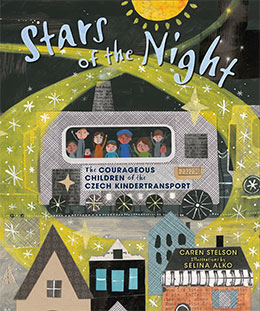 Caren: Ellie, you are so kind to suggest we focus this Peace-ology article on my latest nonfiction picture book, Stars of the Night: The Courageous Children of the Czech Kindertransport. There are really two stories entwined in this picture book — the children of the Czech Kindertransport and the man who saved them, Nicholas Winton. I tell the story from the point of view of the children, using the collective first person “we.” It starts out, “When we were seven or eight or nine or ten, our home was the old city of Prague. Deep down, this story is about courage — both for Nicholas Winton and the children. To me, the story is also about love, resilience and the determination to build new homes after losing families to war.
Caren: Ellie, you are so kind to suggest we focus this Peace-ology article on my latest nonfiction picture book, Stars of the Night: The Courageous Children of the Czech Kindertransport. There are really two stories entwined in this picture book — the children of the Czech Kindertransport and the man who saved them, Nicholas Winton. I tell the story from the point of view of the children, using the collective first person “we.” It starts out, “When we were seven or eight or nine or ten, our home was the old city of Prague. Deep down, this story is about courage — both for Nicholas Winton and the children. To me, the story is also about love, resilience and the determination to build new homes after losing families to war.
Most of us are unaware of the Kindertransport movement during the nine months leading up to the start of WWII. After the deadly pogrom known as Kristallnacht, the “Night of Broken Glass,” November 9 and 10, 1938, it became crystal clear to Jews in Germany, Austria, and Czechoslovakia that their lives and livelihoods were threatened. The persecution they had experienced under Germany’s Hitler had now turned deadly and could get worse. Many of these Jewish parents made the difficult decision to find a safe passage for their children to England, one of the only countries opening their doors to these child refugees.
December 1938, the young 29-year-old British stockbroker, Nicholas Winton, stepped into history. Winton found himself in Prague during a winter holiday and soon became committed to helping as many Jewish Czech children to safety as he could. He saved 669 children from the Holocaust. No one knew of this achievement for fifty years, not even the children Winton saved. Stars of the Night captures the arc of this story for young readers.
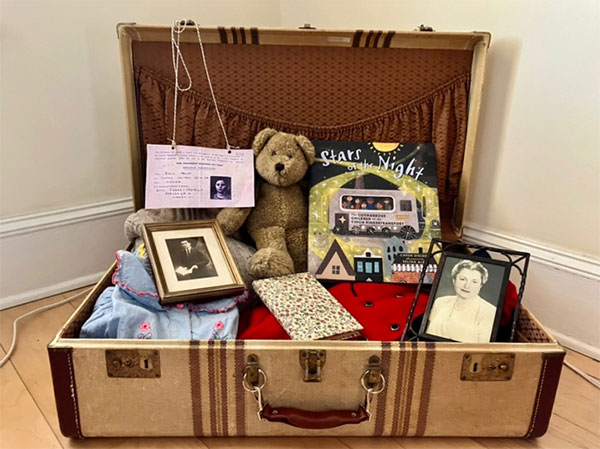
Ellie: What made you want to write the book?
Caren: Several years ago, my older brother Bill sent me a short video clip of the Nicholas Winton story with the message, “I think this will interest you.” I played that clip over and over. Each time, I cried. I still tear up watching it. You can watch it here.
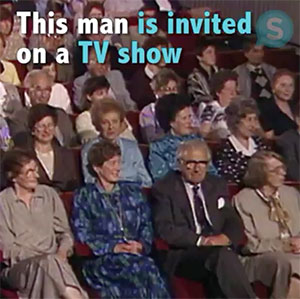 I was drawn to this story for many reasons, but most importantly this story is part of my family history. I’m from a Jewish family. My grandparents are immigrants from Europe. When I think about the Kindertransport, I wonder that if I were born in another time and place, would I have been lucky enough to be on one of those trains filled with children headed to England? With that question, I read and researched as much as I could about Nicholas Winton and the Kindertransport movement. Before this research, I spent years studying WWII to write a previous book, Sachiko, A Nagasaki Bomb Survivor’s Story, about a little girl named Sachiko Yasui who survived the Nagasaki atomic bomb and grew up to be a peacemaker. I’ve been immersed in this historical time for a long while. I’ve always been interested in learning about children who grow up during perilous times and find their way to hope, compassion and peace. Stars of the Night is such a story.
I was drawn to this story for many reasons, but most importantly this story is part of my family history. I’m from a Jewish family. My grandparents are immigrants from Europe. When I think about the Kindertransport, I wonder that if I were born in another time and place, would I have been lucky enough to be on one of those trains filled with children headed to England? With that question, I read and researched as much as I could about Nicholas Winton and the Kindertransport movement. Before this research, I spent years studying WWII to write a previous book, Sachiko, A Nagasaki Bomb Survivor’s Story, about a little girl named Sachiko Yasui who survived the Nagasaki atomic bomb and grew up to be a peacemaker. I’ve been immersed in this historical time for a long while. I’ve always been interested in learning about children who grow up during perilous times and find their way to hope, compassion and peace. Stars of the Night is such a story.
Ellie: When you first saw the illustrations, what struck you? What do the illustrations add to your powerful narrative?
Caren: A picture book is a picture book because the illustrations help deepen the words on the page. Illustrator Selina Alko did a masterful job of doing just that. Selina’s deep artistic sensitivity helped bring this difficult story to a child’s level. Using her signature style of layering and collage, she visually set the historical tone of the book. For example, if readers look carefully, they will spot recipes from a cookbook of the time, or bits of embedded newspaper articles. This technique not only enhances the story, but brings readers back to the page to search for more interesting clues.
I love Selina’s approach to the art in Stars of the Night. And I love Selina! She and I hadn’t met each other until after Stars of the Night was published. When we did finally meet, it felt like we had known each other for a long time. While we worked on the book in our separate homes in New York City and Minneapolis, Selina and I had some kind of mental telepathy going between us. For example, when Selina added colors to five specific children who appear throughout the story, I knew exactly who those children were in real life. I had researched them. I could name them. It felt Selina and I were living this story together.
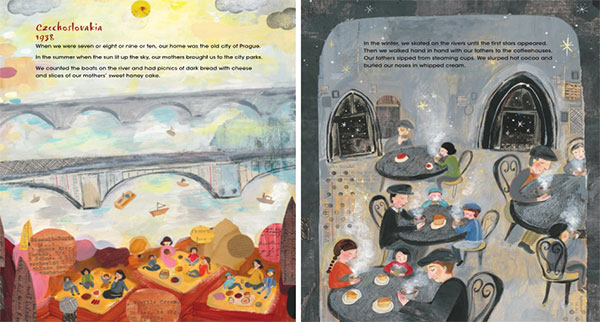
Ellie: What do you hope kids glean from reading Stars of the Night and knowing this story?
Caren: Ellie, you ask such good questions. I’d like to answer this question in four parts.
For younger readers, ages 7, 8, or 9, I hope they realize, besides their parents, there are good people in the world who, even as strangers, will take care of children as if they were their own — particularly under difficult circumstances. There are people in the world like Nicholas Winton who see the necessity to act to help children, even in the face of danger. The Dalai Lama said of Nicholas Winton, “We must carry [Nicholas Winton’s] spirit from generation to generation … Then humanity’s future will be brighter.”
For older readers, I see Stars of the Night as an early opportunity to step into history and ask questions about WWII and the Holocaust. What happened to the children’s parents and why. I wrote an extensive historical timeline in the back matter of the book to help answer some of those questions. I hope Stars of the Night will spark older children’s curiosity about other aspects of WWII and encourage them to research other stories from this difficult time. We have much to learn from that war that will guide us today and into the future.
For all readers, I hope they will remember one mother’s loving message to her daughters before they climbed aboard a Kindertransport train:
There will be times when you’ll feel lonely and homesick. Let the stars
of the night and the sun of the day be the messenger of our thoughts and love.
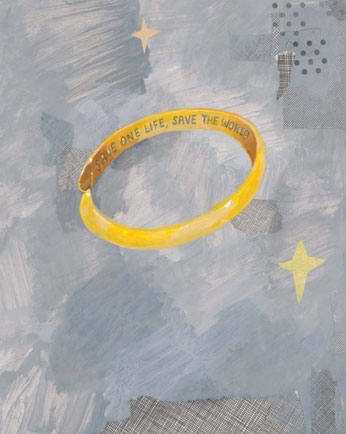
These lines not only soothed two children on their way to England, but the words remind us we can be held together in love no matter where we are, no matter what happens. The parents of the Kindertransport made the ultimate sacrifice. They helped their children find safety in the arms of strangers when safety was not available to them. These children who had a “ticket to life” went on to live their lives. They had children and grandchildren of their own. Today, over 7,000 descendants of the 669 children are living because of Nicholas Winton. “Save one child, save the world,” so says the engraving on a ring given to Nicholas Winton by the children he saved. What a beautiful message to us all.
Finally, my enduring hope for Stars of the Night is this: That readers ask: What kind of person do I want to be? Who will be my models and mentors to help me become that person? By remembering Stars of the Night, I hope readers find the courage to recognize bullying behavior and learn how to act against it. I hope they think about the power of welcoming people of different backgrounds into their lives and be curious about their histories and traditions. I’d hope children believe in the power of kindness, empathy, and compassion. These were the qualities that shone through the actions of Nicholas Winton. These are the qualities of peacemakers everywhere who bring greater light to humanity.
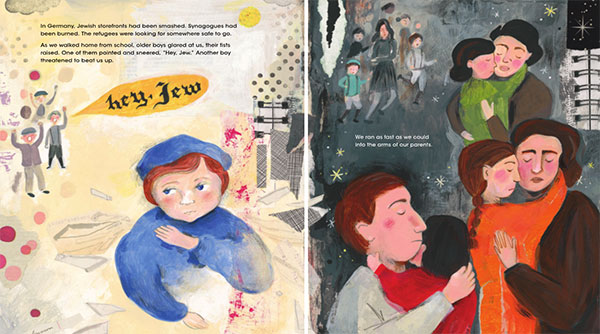
Ellie: How do you see Stars of the Night as a book about peace, and why is it important to read today?
Caren: Ellie, you and I have written about the qualities of peacemaking throughout all our Peace-ology articles. In contrast, Stars of the Night is about war and the terrible things that can happen during war. Yet Stars in the Night helps all of us, in stark terms, realize how precious peace is, that we all have a stake in keeping the peace, that we must never take it for granted. We see the destruction of war happening today in Ukraine. We see the fear and despair on children’s and their parents’ faces. As adults, we know this kind of trauma takes years to heal and real peace to emerge.
Wars are not just between nations. We know war comes in different sizes and shapes. Anger and violence erupt in families, at school, on the playground, in our neighborhoods, our cities, our nation. The themes of Stars of the Night can spark important conversations to understand the ugly elements that stoke violence — fear, prejudice, propaganda, scapegoating, unhealed trauma, power-grabbing. The story’s themes also calls for crucial conversation about the elements of peacemaking— deep listening, empathy, compassion, kindness, conflict resolution, restorative justice, among other peace literacy skills parents and teachers need to help develop in our children. At the very core of this story, Stars of the Night helps us see how imperative it is to care for one another.
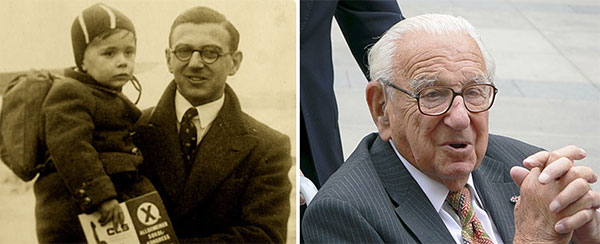
Let me end with this: Last September while my husband and I were visiting London, I had the wonderful experience of meeting Nicholas Winton’s son, Nick Winton. We met at Liverpool Street Station’s “Hope Square” where stands a large, bronze statue dedicated to the children of the Kindertransport. Nick was kind enough to write a message on the back cover of the Stars of the Night. What Nick wrote sums up everything we’ve just talked about:
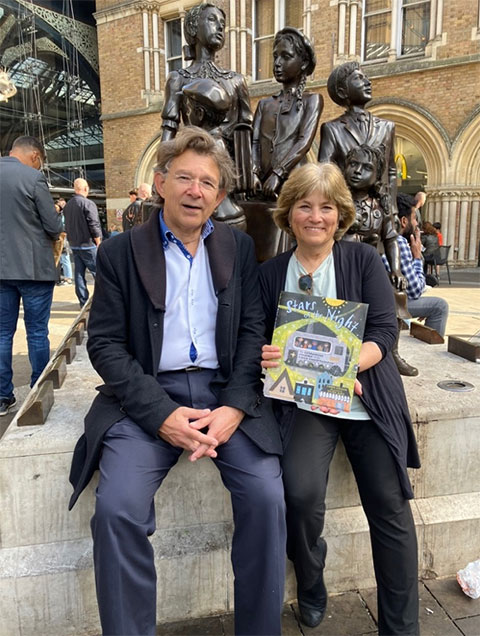
This book tells my father’s story through the eyes of the children he helped to save from the Holocaust. It is a reminder of the huge difference any one of us can make in the lives of others. Our world depends on it. It is down to people like him, people like us, to make the change we want to see. (Nick Winton, son of Sir Nicholas Winton)
Ellie: Caren, you are a gift. Stars in the Night is a gift. Congratulations, and thank you.
Ellie: Oh, Ellie, thank you!
For more information about Stars of the Night visit Caren’s website.
